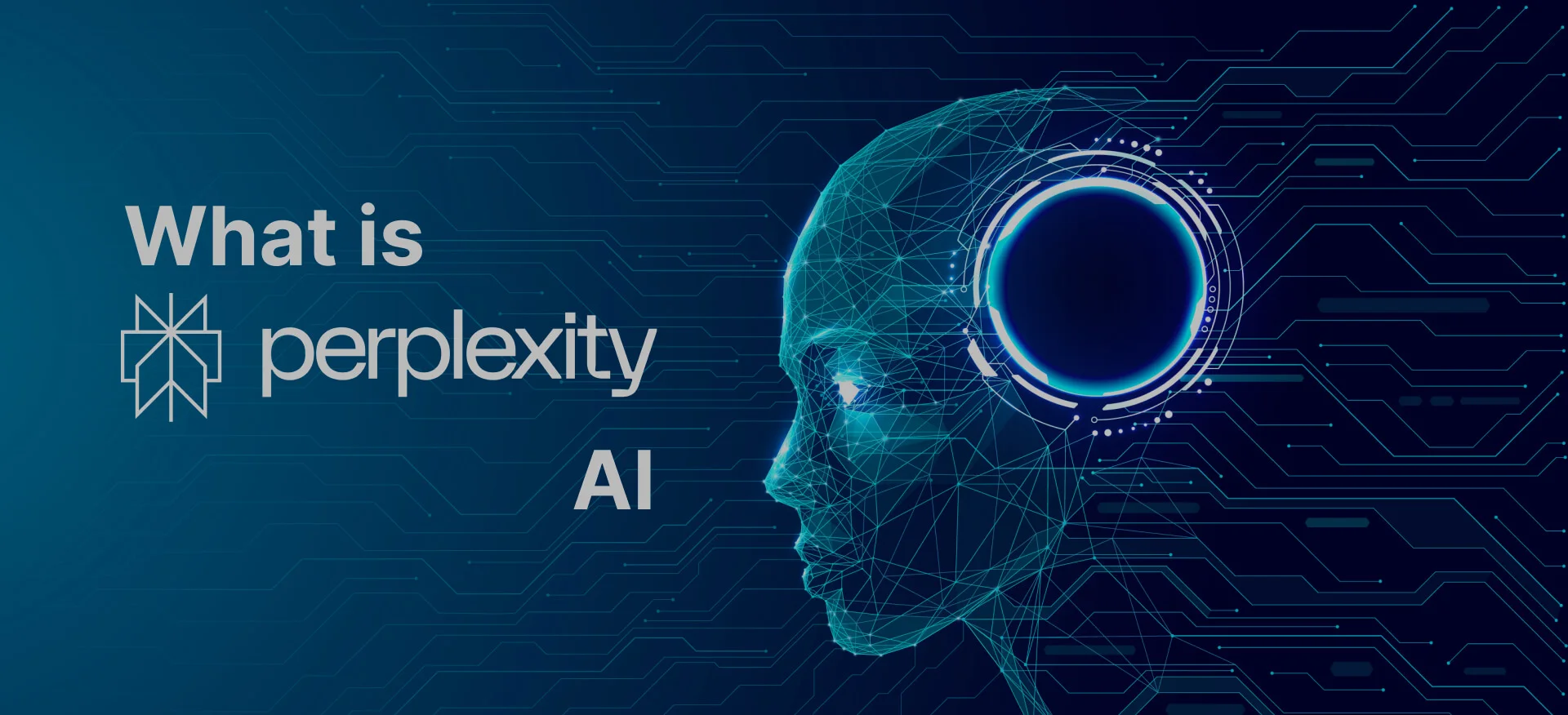Artificial Intelligence (AI) is transforming the way people access, process, and act on information. From predictive analytics to conversational interfaces, AI is reshaping the digital experience at every level. One of the newest innovations in this space is Perplexity AI, a platform that combines conversational search with real-time information retrieval. But what is Perplexity AI used for, and why is it gaining so much attention? Unlike traditional search engines that return static lists of links, what makes Perplexity AI different is that it responds with direct, contextual answers in natural language. It merges the convenience of a chatbot with the depth of a research assistant, enabling faster, more accurate access to knowledge.
According to reports, conversational AI tools like Perplexity are being rapidly adopted, especially by professionals who need quick, reliable insights without having to sift through countless web pages. This raises the question of how is Perplexity AI different from other AI tools, as it offers a unique approach to information retrieval and conversational delivery. This shift in user behavior signals important changes for businesses, content creators, and digital marketers, especially when considering how Perplexity AI is different from other AI. This blog explains what Perplexity AI is, how it works, what makes it unique, and how it could reshape digital strategies in the near future.
What Is Perplexity AI?
About Perplexity AI, it is an AI-powered search and answer engine designed to deliver information through conversational responses rather than traditional search results. Instead of typing a query into a search bar and scanning dozens of links, users interact with Perplexity much like they would with a chatbot. For businesses looking to expand their online visibility, partnering with a professional SEO firm can help ensure that their content is optimized for AI-driven search engines like Perplexity, improving accessibility and accuracy of information.
The platform retrieves data from the web, synthesizes it, and generates direct answers in plain language. Crucially, it also provides citations and references so users can verify the accuracy of the responses. This hybrid approach blends the efficiency of AI with the credibility of human-researched content.
The name "Perplexity" is rooted in natural language processing, where perplexity is a metric used to evaluate how well a model predicts text. The lower the perplexity, the better the AI system is at generating accurate, coherent language.
How Does Perplexity AI Work?
Perplexity AI functions at the intersection of search and conversation. Here’s how it works step by step:
![]()
- User Query: The user types or speaks a question.
- AI Interpretation: The platform uses natural language processing to understand intent.
- Information Retrieval: It searches across multiple sources on the internet, including news sites, academic publications, and trusted databases.
- Answer Generation: The AI synthesizes the information into a concise, conversational response.
- Citation Display: Sources are shown alongside the response for transparency.
When it comes to tools like Perplexity AI, users are often curious about what is an AI model? In simple terms, AI models are algorithms that are trained to perform specific tasks, such as understanding natural language or retrieving information.
Unlike search engines that leave interpretation to the user, Perplexity reduces cognitive load by summarizing relevant insights instantly.
Businesses that want to future-proof their online presence are beginning to incorporate this user-first mindset into Creative Services, ensuring information is designed and delivered with clarity.
Explore Our Web Design & Development Services!
How Perplexity AI Different from Traditional Search Engines?
Perplexity AI vs Claude shows distinct advantages in conversational responses with citations, differentiating itself from other platforms like Google or Bing:
- Conversational Format: Answers are provided in natural, human-like language.
- Real-Time Retrieval: Responses pull from current sources, not just indexed pages.
- Transparency: Citations and references are provided alongside every response.
- Reduced Overload: Instead of 10+ pages of links, users get a single, synthesized answer.
- Context Awareness: Follow-up questions refine results without needing a new search.
This design makes it particularly attractive to professionals in industries like Banking and Finance, where decision-making relies on accuracy and efficiency.
Why Perplexity AI Matters?
The rise of AI-driven search tools like Perplexity is shaping how businesses approach content and SEO strategies. With the growing shift toward conversational search, companies need to rethink their approach to digital marketing. A best local SEO service provider can help businesses optimize their content for AI-driven platforms like Perplexity, ensuring they maintain visibility while aligning with the new wave of search behavior.
1. Changing User Expectations
Audiences no longer want to scroll through endless results. They expect direct, reliable answers. Perplexity meets this demand by delivering knowledge in an accessible, conversational way.
2. Impact on SEO
If platforms like Perplexity AI become mainstream, businesses may need to rethink SEO strategies. Instead of optimizing only for search engines, content must also be structured to support AI-driven retrieval and synthesis.
3. Opportunities for Efficiency
For industries such as Real Estate, Perplexity can accelerate research—helping buyers, investors, and agents find precise answers about trends, prices, or regulations.
4. A Step Toward Conversational Web
Perplexity represents a shift toward a conversational internet, which makes it stand out in ChatGPT vs Perplexity AI comparisons. Instead of typing keywords, users will increasingly “talk” to platforms to retrieve what they need.
Businesses looking to keep pace with these changes often embed AI-readiness into Web Design & Development Services, ensuring their platforms are discoverable in both traditional and AI-driven environments.
Applications of Perplexity AI
The use cases for Perplexity AI span multiple domains:
- Education: Students can quickly gather information from verified sources for research projects.
- Healthcare: Professionals can access the latest studies and clinical guidelines in seconds.
- Business Intelligence: Executives use it to pull market data, competitor insights, and industry reports.
- Media and Publishing: Journalists benefit from fast, source-backed summaries of breaking news.
- Customer Experience: Companies can integrate conversational AI to enhance support systems.
Industries like Technology stand to gain the most, as the pace of innovation requires fast, reliable access to emerging insights.
Top 5 Benefits of Perplexity AI
Perplexity AI offers numerous benefits, one of the most important being its ability to deliver highly relevant and up-to-date answers. For businesses that want to ensure their content is not only optimized for search engines but also compatible with AI-driven platforms, partnering with the seo promotion company can provide the necessary tools to stay ahead in a rapidly evolving digital landscape.
![]()
This tool also provides unique functionalities, such as assisting users to turn off meta AI when focusing on specific queries and data insights that are not influenced by AI.
- Time-Saving: Eliminates the need to comb through multiple sites.
- Credibility: Offers citations to verify accuracy.
- Accessibility: Conversational format makes information easier to digest.
- Scalability: Can handle vast queries across domains.
- Customization: Allows follow-up questions for deeper context.
For organizations rethinking their information delivery, Design Services play a key role in ensuring that content is structured in ways AI platforms can process effectively.
Challenges and Limitations
Despite its promise, Perplexity AI has challenges:
- Reliance on Data Quality: Accuracy depends on the sources it pulls from.
- Bias in AI Models: If training data is biased, responses may reflect those biases.
- Verification Burden: While citations are provided, users must still validate claims.
- Competition with Search Engines: It remains unclear how adoption will affect existing search platforms.
For businesses in highly regulated industries, like Luxury Brands, ensuring information accuracy and brand alignment will be crucial when AI platforms interpret their content.
Perplexity AI: Key Features & Benefits
| Feature | Description | Benefits |
|---|---|---|
| Conversational Search | Provides direct, contextual answers in natural language instead of traditional search results. | Enhances user experience by delivering precise information quickly. |
| Real-Time Information Retrieval | Retrieves and synthesizes data from the web in real-time, ensuring up-to-date responses. | Keeps users informed with the latest information. |
| Source Citations | Includes references to original sources alongside responses. | Increases transparency and allows users to verify information. |
| Model Selector | Offers a choice between different AI models (e.g., GPT-4, Claude 4.0, Gemini Pro 2.5) for tailored responses. | Provides flexibility and control over the type of response received. |
| Comet Browser | An AI-powered browser that integrates search tools and a personal AI assistant for tasks like shopping and trip planning. | Streamlines online tasks and enhances productivity. |
| Pro Search | A guided AI search experience that allows users to explore topics in depth and organize information in Perplexity Spaces. | Facilitates comprehensive research and knowledge management. |
| Multimodal Capabilities | Supports generating images and uploading documents to inform searches. | Expands the range of queries and enhances the depth of responses. |
| Voice Integration | Enables users to interact with Perplexity AI through voice commands on mobile devices. | Offers hands-free convenience and accessibility. |
| Email Assistant | Integrates with Outlook and Gmail to manage inboxes, prioritize messages, and draft replies. | Improves email management and communication efficiency. |
How Businesses Should Prepare?
To remain competitive in an AI-driven search landscape, businesses can take several steps:
- Optimize for Conversational Queries: Structure content around natural language questions.
- Prioritize Quality Content: High-value, trustworthy material is more likely to be referenced.
- Leverage Structured Data: Use metadata and schema to help AI platforms interpret context.
- Focus on Accessibility: Ensure content is easy to navigate and inclusive for all users.
- Integrate AI Tools: Experiment with conversational AI within customer support and internal knowledge bases.
Businesses embedding these changes often do so as part of broader Digital Transformation Services, which align technology adoption with long-term strategy.
FAQs: What Is Perplexity AI?
What is Perplexity AI?
Perplexity AI is an AI-powered conversational search tool that retrieves real-time information from the web, synthesizes it into natural language, and provides citations for accuracy, making it a crucial tool for professionals seeking reliable insights. This innovation answers the question of what makes Perplexity different from other AI.
How is Perplexity AI different from Google?
Google provides a list of search results, while Perplexity delivers synthesized, conversational answers with source citations—reducing the need to click through multiple pages. For businesses in industries such as e-commerce, where accurate information is essential, working with a retail SEO company can help ensure that content is tailored to be compatible with AI-driven platforms, boosting engagement and improving conversion rates.
Is Perplexity AI reliable?
Perplexity is designed to improve reliability by citing sources, but accuracy still depends on the quality of the data retrieved. Users should verify important information.
Who can benefit from Perplexity AI?
Students, professionals, researchers, and industries like healthcare, technology, and finance benefit from its ability to deliver quick, credible insights.
How will Perplexity AI impact SEO?
As AI-driven platforms rise, SEO strategies may shift toward optimizing content for conversational queries and structuring data so AI tools can interpret and present it effectively.
Conclusion
The rise of Perplexity AI signals a new era in how people search, consume, and validate information. By combining real-time retrieval with conversational delivery, it reduces friction and reshapes user expectations. While challenges remain, such as ensuring accuracy and mitigating bias, its growing adoption suggests businesses must prepare for a future where conversational AI, such as What Is Perplexity AI, becomes mainstream.
Organizations that adapt early by aligning their content, design, and platforms with this new reality will be better positioned to maintain visibility and trust. Centric supports this shift by embedding user-first approaches into Web Design & Development Services, helping businesses stay discoverable in both traditional and AI-driven search landscapes.









